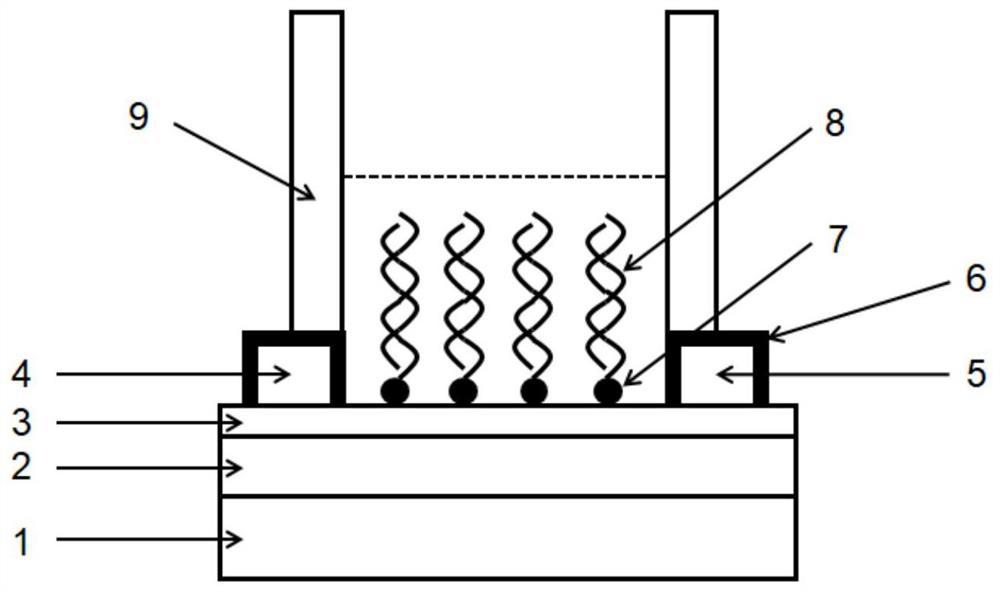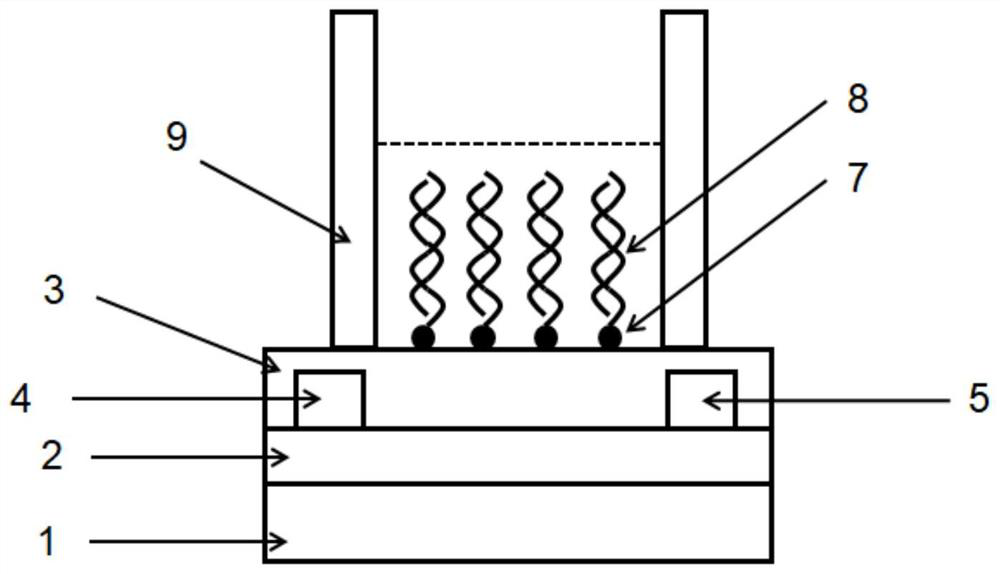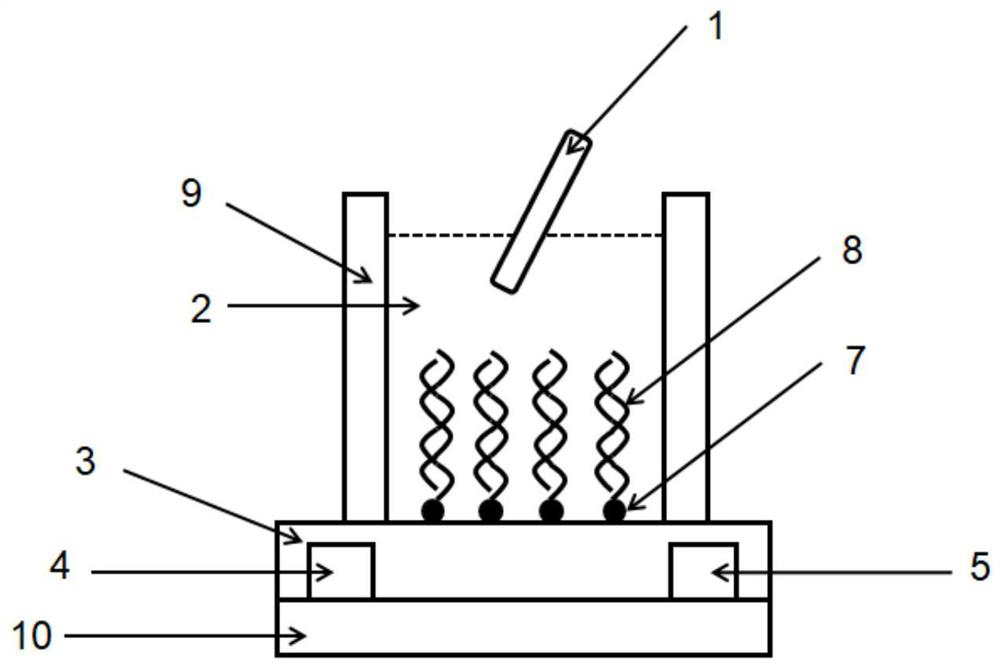Nucleic acid micro-damage detection method based on field effect transistor and biosensor
A field effect transistor and biosensor technology, which is applied in the field of nucleic acid micro-damage detection methods and biosensors based on field effect transistors
- Summary
- Abstract
- Description
- Claims
- Application Information
AI Technical Summary
Problems solved by technology
Method used
Image
Examples
Embodiment 1
[0045] Such as figure 1 The field-effect transistor-based biosensor shown has a bottom-gate top-contact structure. The biosensor comprises: a gate 1, an insulating layer 2, a semiconductor layer 3, a source electrode 4, a drain electrode 5, an electrode protection layer 6 and a micro-reservoir 9 from bottom to top. The source electrode 4 and the drain electrode 5 are arranged on the surface of the semiconductor layer 3, and gold nanoparticles 7 are fixed on the surface of the semiconductor layer 3, and the nucleic acid molecule connection site layer is formed by the gold nanoparticles. Gold nanoparticles 7 are linked to nucleic acid molecules 8 .
[0046] The micro reservoir 9 has a side wall and a top surface and a bottom surface surrounded by the side wall, the bottom surface is closed by the nucleic acid molecule connection site layer, the top surface is not closed, and the top surface has a circular opening with a radius of 2mm; wherein the side wall The material is PDMS...
Embodiment 2
[0058] According to the detection method of Example 1, only the solution to be tested in the reservoir is replaced with a solution containing carboplatin or oxaliplatin. Test the double-stranded DNA damage caused by carboplatin and oxaliplatin, and compare the test results with the double-stranded DNA damage test results caused by cisplatin in Example 1 (such as Figure 7 ), found that the double-stranded DNA damage caused by oxaliplatin is smaller than that caused by carboplatin, and the double-stranded DNA damage caused by carboplatin is smaller than that caused by cisplatin, indicating that the above obtained biological The sensor can respond to double-strand DNA damage and can characterize the degree of double-strand DNA damage.
Embodiment 3
[0060] According to the method in Example 1, only the double-stranded DNA grafted in step 6) is replaced with single-stranded DNA, and the biosensor obtained by the above method is used to detect the damage caused by cisplatin to the single-stranded DNA, and the device shows a resistance to cisplatin The resulting single-strand DNA damage response was similar to that of Example 1.
PUM
| Property | Measurement | Unit |
|---|---|---|
| thickness | aaaaa | aaaaa |
| thickness | aaaaa | aaaaa |
| thickness | aaaaa | aaaaa |
Abstract
Description
Claims
Application Information
 Login to View More
Login to View More - R&D
- Intellectual Property
- Life Sciences
- Materials
- Tech Scout
- Unparalleled Data Quality
- Higher Quality Content
- 60% Fewer Hallucinations
Browse by: Latest US Patents, China's latest patents, Technical Efficacy Thesaurus, Application Domain, Technology Topic, Popular Technical Reports.
© 2025 PatSnap. All rights reserved.Legal|Privacy policy|Modern Slavery Act Transparency Statement|Sitemap|About US| Contact US: help@patsnap.com



